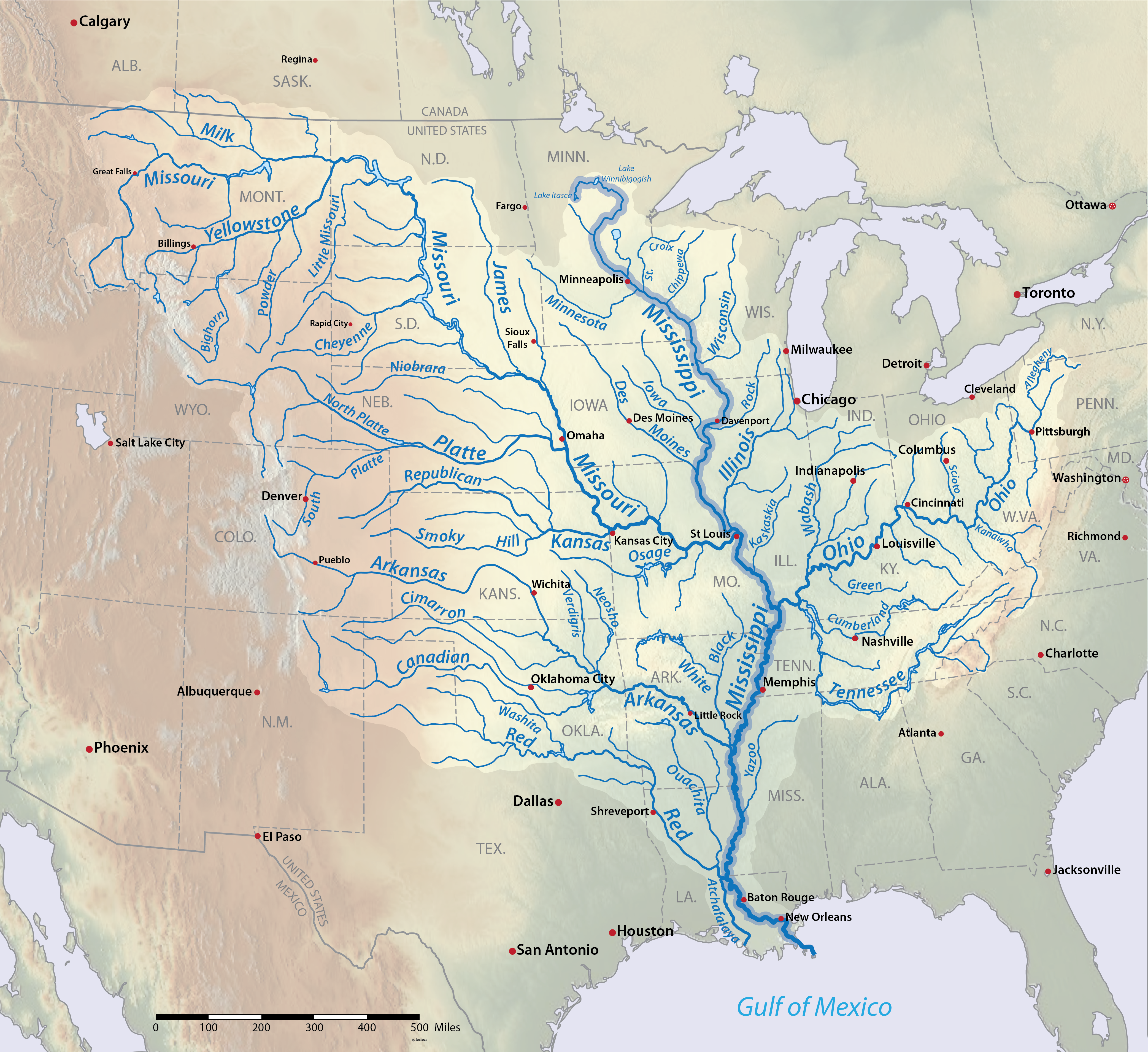main stem on:
[Wikipedia]
[Google]
[Amazon]
 In
In  Hydrological classification systems assign numbers to tributaries and mainstems within a drainage basin. In the
Hydrological classification systems assign numbers to tributaries and mainstems within a drainage basin. In the
 In
In hydrology
Hydrology () is the scientific study of the movement, distribution, and management of water on Earth and other planets, including the water cycle, water resources, and environmental watershed sustainability. A practitioner of hydrology is calle ...
, a mainstem (or trunk) is "the primary downstream segment of a river
A river is a natural flowing watercourse, usually freshwater, flowing towards an ocean, sea, lake or another river. In some cases, a river flows into the ground and becomes dry at the end of its course without reaching another body of wate ...
, as contrasted to its tributaries
A tributary, or affluent, is a stream or river that flows into a larger stream or main stem (or parent) river or a lake. A tributary does not flow directly into a sea or ocean. Tributaries and the main stem river drain the surrounding drainag ...
". Water enters the mainstem from the river's drainage basin
A drainage basin is an area of land where all flowing surface water converges to a single point, such as a river mouth, or flows into another body of water, such as a lake or ocean. A basin is separated from adjacent basins by a perimeter, t ...
, the land area through which the mainstem and its tributaries flow.. A drainage basin may also be referred to as a ''watershed'' or ''catchment''.
Strahler number
In mathematics, the Strahler number or Horton–Strahler number of a mathematical tree is a numerical measure of its branching complexity.
These numbers were first developed in hydrology by and ; in this application, they are referred to as the ...
, a modification of a system devised by Robert E. Horton
Robert Elmer Horton (May 18, 1875 – April 22, 1945) was an American hydrologist, geomorphologist, civil engineer, and soil scientist, considered by many to be the father of modern American hydrology. An eponymous medal is awarded by the Ameri ...
in 1945, channels with no tributaries are called "first-order" streams. When two first-order streams meet, they are said to form a second-order stream; when two second-order streams meet, they form a third-order stream, and so on. In the Horton system, the entire mainstem of a drainage basin was assigned the highest number in that basin. However, in the Strahler system, adopted in 1957, only that part of the mainstem below the tributary of the next highest rank gets the highest number.
In the United States, the Mississippi River
The Mississippi River is the second-longest river and chief river of the second-largest drainage system in North America, second only to the Hudson Bay drainage system. From its traditional source of Lake Itasca in northern Minnesota, it f ...
mainstem achieves a Strahler number of 10, the highest in the nation. Eight rivers, including the Columbia River
The Columbia River (Upper Chinook: ' or '; Sahaptin: ''Nch’i-Wàna'' or ''Nchi wana''; Sinixt dialect'' '') is the largest river in the Pacific Northwest region of North America. The river rises in the Rocky Mountains of British Columbia, C ...
, reach 9. Streams with no tributaries, assigned the Strahler number 1, are most common. More than 1.5 million of these small streams, with average drainage basins of only , have been identified in the United States alone. Outside of the United States, the Amazon River
The Amazon River (, ; es, Río Amazonas, pt, Rio Amazonas) in South America is the largest river by discharge volume of water in the world, and the disputed longest river system in the world in comparison to the Nile.
The headwaters of t ...
reaches a Strahler number of 12, making it the highest-order river in the world.
References
{{Authority control Fluvial landforms Rivers Water streams